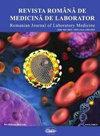Atellica CH 930化学分析仪与Cobas 6000 c501和Architect ci4100的多分析方法比较
IF 0.5
4区 医学
Q4 MEDICINE, RESEARCH & EXPERIMENTAL
引用次数: 1
摘要
大型临床实验室往往依赖于多台化学分析仪。然而,当引进一种新的分析仪时,实验室必须确定新旧方法是否具有可比性,是否可以互换使用。在本研究中,我们将新引入的Atellica CH930化学分析仪与我们实验室已经建立的Architect ci4100和Cobas 6000 c501进行了比较。从日常常规检测中随机抽取患者样本,共调查22种分析物。在相关医疗决策水平(MDL)上计算测试(Atellica)和比较(Architect和Cobas)方法之间的总误差(TEobs)。为了演示目的,方法可比性的评估基于三个不同的标准:生物变异(BV)衍生的允许总误差(TEa),可接受分析性能的CLIA熟练测试标准,以及CLIA计算的Sigma指标。本文还对这些分析性能指标进行了比较,并讨论了它们的优点和局限性。根据BV-TEa、CLIA-TEa和clia计算的Sigma指标,Atellica CH930对Architect ci4100的性能分别在82%、95%和64%的22个被调查的mdl中可接受或接近可接受。同样,根据BV-TEa、CLIATEa和clia计算的Sigma指标,Atellica CH930对Cobas 6000 c501的性能在22种分析物的54个mdl中分别为61%、93%和63%可接受或接近可接受。然而,不应采用“一刀切”的方法来评估方法的可比性,因为一些分析物需要不同的可接受性标准,理想情况下是基于医学上允许的误差和临床结果。本文章由计算机程序翻译,如有差异,请以英文原文为准。
Atellica CH 930 chemistry analyzer versus Cobas 6000 c501 and Architect ci4100 - a multi-analyte method comparison
Abstract Large clinical laboratories often rely on multiple chemistry analyzers. However, when a new analyzer is introduced, the laboratory must establish whether the old and new methods are comparable and can be used interchangeably. In this study, we compared the newly introduced Atellica CH930 chemistry analyzer with the already established Architect ci4100 and Cobas 6000 c501 from our laboratory. Patient samples were randomly selected from daily routine testing and a total of 22 analytes were investigated. Total error (TEobs) between test (Atellica) and comparative (Architect and Cobas) methods was calculated at relevant medical decision levels (MDL). For demonstrative purposes, the assessment of method comparability was based on three different criteria: allowable total error (TEa) derived from biological variation (BV), CLIA proficiency testing criteria for acceptable analytical performance, and CLIA-calculated Sigma metrics. These sets of analytical performance specifications were also compared, and their strengths and limitations are discussed in this paper. Performance of Atellica CH930 against Architect ci4100 was acceptable or nearly acceptable at 82%, 95%, and 64% of the 22 investigated MDLs across 9 analytes, according to BV-TEa, CLIA-TEa, and CLIA-calculated Sigma metrics, respectively. Similarly, performance of Atellica CH930 against Cobas 6000 c501 was acceptable or nearly acceptable at 61%, 93%, and 63% of the 54 investigated MDLs across 22 analytes, according to BV-TEa, CLIATEa, and CLIA-calculated Sigma metrics, respectively. However, method comparability should not be evaluated by a “one size fits all” approach as some analytes require different criteria of acceptability, ideally based on medically allowable error and clinical outcome.
求助全文
通过发布文献求助,成功后即可免费获取论文全文。
去求助
来源期刊

Revista Romana De Medicina De Laborator
MEDICINE, RESEARCH & EXPERIMENTAL-
CiteScore
0.31
自引率
20.00%
发文量
43
审稿时长
>12 weeks
期刊介绍:
The aim of the journal is to publish new information that would lead to a better understanding of biological mechanisms of production of human diseases, their prevention and diagnosis as early as possible and to monitor therapy and the development of the health of patients
 求助内容:
求助内容: 应助结果提醒方式:
应助结果提醒方式:


